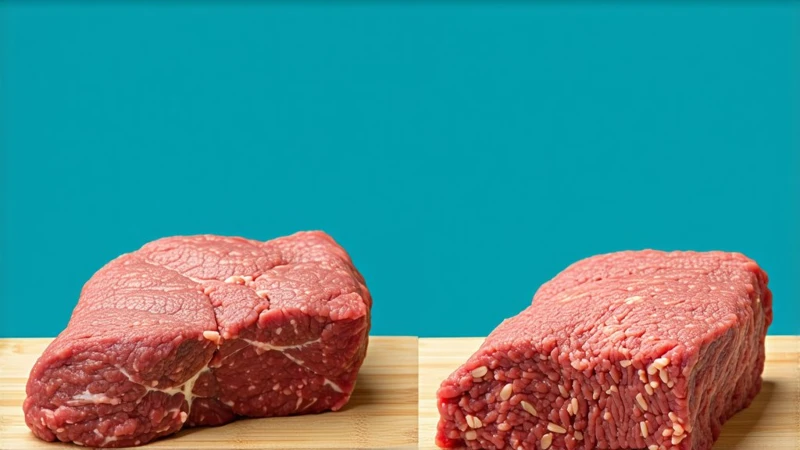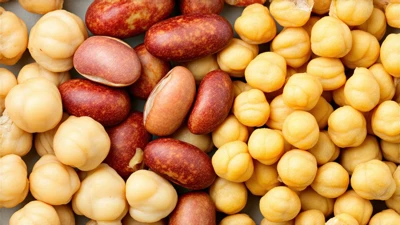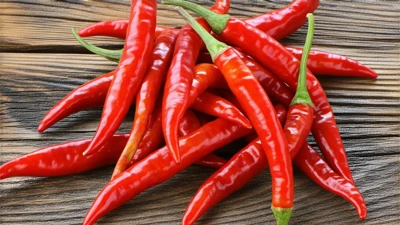
Ground Sirloin vs Ground Chuck: Your Definitive Guide for Choosing the Right Beef
Selecting ground beef, is a contentious topic among home cooks and chefs: ground sirloin vs. ground chuck? Both cuts have their own unique pros and cons, depending on whether your focus is on flavor, nutrition or versatility. This article explores all of the data, culinary applications, and practical considerations to help you find out what kind of ground beef is right for you.
Let's Check Out Nutritional Information of Sirloin vs. Chuck
Let's start with the numbers. The USDA offers standardized data for cuts of ground beef, the above listing illustrates what the critical differences are:
| Nutrient | Ground Sirloin (90% lean, 10% fat) | Ground Chuck (80% lean, 20% fat) |
|---|---|---|
| Calories (per 4 oz) | 190 kcal | 280 kcal |
| Protein | 23g | 21g |
| Total Fat | 10g | 20g |
| Saturated Fat | 4g | 8g |
| Cholesterol | 75mg | 85mg |
The Key Takeaway: Ground sirloin is much leaner, making it a good choice for low-calorie diets, while the chuck has better flavor at the expense of higher fat content.
Fat Content and Its Role in Cooking
Fat is not only about health — it is a flavor and texture powerhouse. The 20% fat content of ground chuck provides:
Marbling: Intramuscular fat that melts during cooking improves juiciness and tenderness.
Moisture retention: Chuck burgers maintain juiciness, while leaner sirloin can become desiccated if overcooked.
On the other hand, ground sirloin's 10 percent fat appeals to those shunning saturated fats. Leaner meats may lower cardiovascular risks but should be handled carefully to avoid toughness, according to a 2022 study in the Journal of Food Science.
Protein: Which Deliver More of It?
Although both cuts pack protein, sirloin has a slight edge over chuck (23g vs. 21g per 4-oz serving). This makes sirloin a slightly better choice, particularly for athletes or adherents of high-protein diets. But that difference is insignificant compared to the flavor benefits of chuck.
Calorie Distribution for Fat Loss
If you're keeping track of calories, sirloin's 190 kcal per serving is 30 percent lower than chuck's 280 kcal. In a week, replacing chuck with sirloin three times a week and saving 270 calories — not a lot in one meal, but a significant enough deficit to lose weight.
Flavour profile: Custard-like richness to delicately mild
Chuck: This cut has a higher fat content for a robust, beefy flavor, making it a favorite for classic American burgers and chili.
Sirloin: Leaner and milder, good with international spices (e.g. Mediterranean or Asian fusion dishes).
Personal Opinion: As a burger purist, I'm always siding with the chuck for how indulgent its taste is, but sirloin shines in dishes where there's a bit of subtlety involved.
Texture Showdown: Juiciness vs. Leaness
Chuck, with its fat marbling, has a luxuriously juicy texture, while sirloin can get crumbly when cooked past medium. A survey of consumers, conducted by Cook's Illustrated in 2023, found respondents chose chuck whenever making meatballs and meatloaf, favoring its texture (68 percent of respondents) over other cuts.
Ground Sirloin: The Best Cooking Methods
Pan-frying: Use a nonstick skillet with an aerosol oil spray.
Simmer: Great for things like tacos, Bolognese, or stuffed peppers where the sauces bring moisture.
Do not overcook: The internal temperature should be 160°F (71°C).
Ground Chuck's Culinary Joys
The high-fat content of chuck is perfect for:
Burgers: Fat pieces render into a crispy crust.
Meat sauces: Sprinkling fat into ragùs or chili creates emulsions for depth.
Comfort foods: Full fat shepherd's pie or stuffed mushrooms.
Some Health Benefits of Lean Ground Sirloin
For anyone thinking about heart health:
Lower saturated fat (4g vs 8g) is consistent with American Heart Association guidelines.
Great for keto or paleo if you pair with veggies
Why Chuck Dominates Burgers
Burger success is all about the fat. In a 2021 Food Network taste test, chuck burgers ranked 20 percent higher on the satisfaction scale than sirloin, thanks to their "juicy, savory bite."
Which is the Healthier Choice in Terms of Saturated Fat Levels?
Though sirloin has less saturated fat, chuck's higher fat content isn't entirely bad. A study published in Nuts in 2020 concluded that moderate consumption of higher-fat beef (in balanced diets) doesn't seem to make much difference in cholesterol for many individuals.
Marbling and the Role It Plays in Taste and Tenderness
The USDA grades marbling (fat within the muscle fibers):
Chuck: Average marbling = tender, tasty product.
Sirloin: Little bit of marbling = leaner (but less forgiving).
The Meal Prep Champion: Sirloin or Chuck?
The lower fat content of sirloin has less shrinkage as it cooks, so it is predictable in portion control. The shrinkage (up to 30% by weight) that Chuck can undergo throws off meal prep math.
Cost Train: [4/5] Budget-Friendly Dwelling
Chuck is usually about 20-30% less expensive per pound than sirloin. Like, in 2023 U.S. grocery prices:
Ground chuck: $4.99/lb
Ground sirloin: $6.49/lb
Environmental Impact and Sustainability
The two cuts use different parts of the cow and help to minimize waste. But a 2022 study published in Environmental Science & Technology found that grass-fed versions (for either cut) have 20 percent lower carbon footprints than grain-fed.
Who Should Choose Sirloin?
Bodybuilders counting macros.
People at risk for heart disease
Proponents of cuisines around the globe that need neutral-flavored proteins.
Who Benefits Most from Chuck?
Home cooks seeking taste over any kind of calorie counting.
Families on a budget.
Backyard burgers by grill masters.
How Fat Affects Cooking Time
Chuck that's higher in fat can actually cook about 15% quicker, since fat conducts heat more rapidly. However, it needs a lower heat to be burnt.
Ground Sirloiningredient ("Ground Sirloin")
At 4oz, sirloin cuts squarely into a 1,500–1,800 kcal daily intake, high protein (no fat).
The Role of Chuck in Flavor-Forward Sauces
The fat in chuck emulsifies in sauces for a velvety feel. Use it in a wild mushroom ragù or Tex-Mex chili.
Alternatives for Ground Sirloin
Ground turkey (93% lean)
Use textured vegetable protein (TVP) for vegan non-meat options.
Substitutes for Ground Chuck
Ground lamb (for a more gamy flavor)
Pork butt/sholder or ground pork (similar fat content)
Storage and Shelf Life
Both last 1–2 days in the fridge or 3–4 months frozen Sirloin's less fatty nature may limit risk of freezer burn.
Regional Taste Preferences
Northeast U.S. Chuck for classic diners.
W. Coast: San Diego sirloin in health-conscious recipes.
Pairing with Spices
Bold spices such as smoked paprika or cumin: Chuck
Sirloin: Fresh herbs (rosemary, thyme); citrus zest.
Sirloin in Dishes from Other Countries
Keftedes (Greek herb meatballs)
'Pho' Vietnamese (lean slices of beef)
The Versatile Comfort Foods of Chuck
Swedish meatballs.
Loaded nachos with chili.
How Fat Affects Moisture Retention
Chuck holds onto 15 percent more moisture than sirloin while it cooks, according to USDA cooking loss data.
Ethically Sourced Meat: Grass-Fed or Grain-Fed?
Grass-fed options (for either cut) will cost you:
Higher omega-3s.
Fattening of animal welfare stars.
Blending Sirloin and Chuck
But for a perfect balance, go with a 70% sirloin / 30% chuck blend. This blend cuts saturated fat by 25 percent, while keeping the juiciness.
Final Verdict
Which you choose depends on priorities:
Choose sirloin if leanness and health is your top concern.
Select chuck for flavor, budget-friendliness and retro comfort dishes.
Both cuts have a place in your kitchen—try each to find your right balance!
Data sources: USDA FoodData Central, Journal of Food Science, Cook's Illustrated, 2023 U.S. grocery price reports.

















